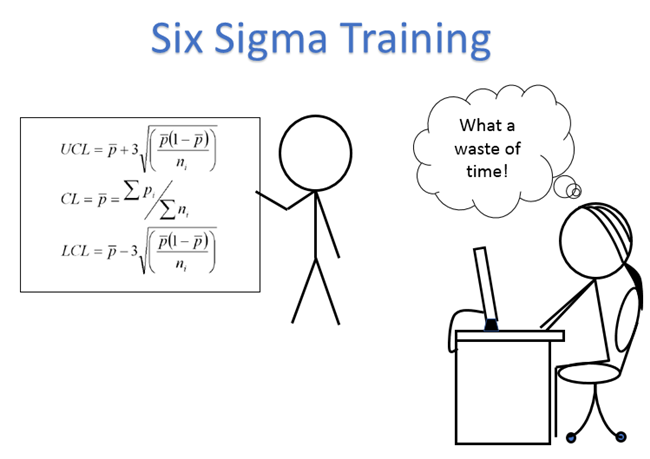Every Day Should Be World Quality Day
Let’s create a Hassle Free America and a Hassle Free World
Consultants, trainers and professors are wasting students’ time on things they don’t need to know to solve problems they don’t have to impress people they don’t like.

In the movie City Slickers, Jack Palance gives Billy Crystal some advice that applies to Lean Six Sigma. Do you know what it is?

Here’s how to deal with the creature you’ve created.
Continue Reading "Have Your Processes Turned Into Frankenprocesses?"
A district level manager was hopping mad about something. I decided to see if I could use pacing and leading to calm her down and get back to solving the problem to meet her needs.
Continue Reading "Building Rapport with Improvement Teams – Step 3"
My boss sent me to talk to a cranky manager about a software project he wanted to do. Here’s how I used non-verbal rapport to connect with him in 30-60 seconds.
Continue Reading "Building Rapport with Improvement Teams – Step 2"
I was tasked with training the leadership team of U S West, the president and his vice presidents. Here’s how I started to build rapport with the leadership team and every team afterwards.
Continue Reading "Building Rapport with Improvement Teams – Step 1"
I recently had to do some home repairs. It’s amazing what you can learn in a 3-minute video and how much time it will save you. The same is true of Lean Six Sigma. Save yourself time and rework. Learn the easy way.
Sign up for my weekly insight videos at: https://www.qimacros.com/free-resources/newsletter/

Here’s how to build rapport with team members using their communication style: visual, auditory or kinesthetic.
Discover your communication style. Click here:
Continue Reading "Building Rapport with Improvement Teams – Step 4"
How can we use the same language as our team members to develop rapport and accelerate the team’s success?
Continue Reading "Building Rapport with Improvement Teams – Step 5"